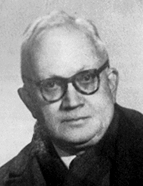

Central to his research was the Spanish-Portuguese peninsular duality. It's a reality that is not possible to explain on a map. Portuguese nationality, which emerged early on (like others on the Peninsula, such as Catalan and Basque), but most importantly (and this is the key point) continued to deepen and endure. Independence as a mystery or a miracle? (Études sur l’histoire, p. 13). For the historian, it's neither one thing nor the other, but a problem that needs to be solved. There is a Portuguese culture, which has links with Spanish culture, but cultures that are distinct. Portugal has been formed since 1250, with the conquest of the Algarve. It soon formed a separate entity from Castile. But Spain had not yet been formed. In contrast to a "unified, complete" Portugal, there are the separate kingdoms of Castile, Aragon, Navarre and the Muslim kingdom of Granada (Études sur l’histoire..., p. 17). And Portugal will endeavour to remain independent. Even maritime expansion is due to the disproportion between the two political entities. And even in the linguistic realm, whose boundaries are particularly in line with what happens in the realm of politics. Although politics and culture cannot be confused, neither do they overlap. And until at least the Restoration of 1640, Robert Ricard argues that there was and remained a peninsular culture, when the languages were already differentiated. And he always tries to find aspects in the two literatures that he calls "complementary" and not opposites. In the same way that "Portuguese navigators and Spanish conquistadors complement each other" (Études et documents, p. 9). This does not leave aside the political aspects, particularly after the Iberian Union.
With the revival of diversified politics after the Restoration in 1640, the cultural duality of different — and often adversarial — States was resumed. Portugal and Castile experienced numerous conflicts, which explains their political differentiation; however, what might seem contradictory is the sustained continuity of a shared literary culture. This cultural (and linguistic, in terms of artistic expression, with Galician-Portuguese as the common language for medieval lyrical poetry and Castilian for other forms of expression later on) community, in which Castilian works by Gil Vicente, Sá de Miranda, and Camões stand out, still during the Renaissance. After and during the dynastic union, Portugal leaned towards a privileged relationship with French culture and artistic expressions after 1640. Because "the political rupture will be accompanied by an intellectual and spiritual rupture." (Études sur l’histoire..., p. 16). After all, as Robert Ricard proposes, it is the period from 1580 to 1640 that intensifies the cultural divide between Spain and Portugal.
This work is financed by national funds through FCT - Foundation for Science and Technology, I.P, in the scope of the projects UIDB/04311/2020 and UIDP/04311/2020.
